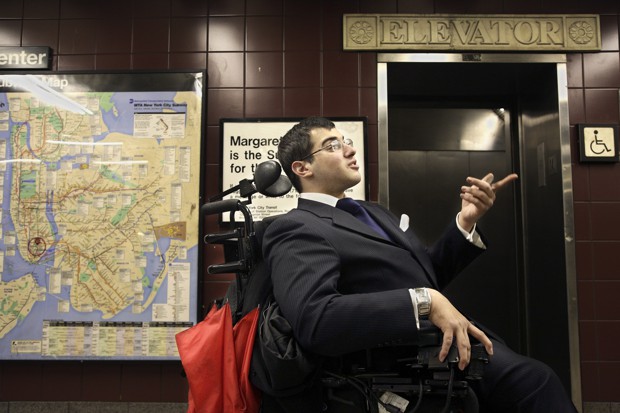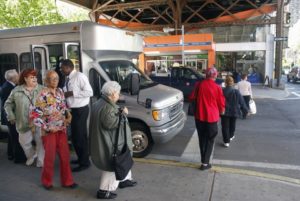Transit agencies, take note: For the growing number of Americans over 65, mobility can’t wait.
1. Good transit can ease isolation
Nearly a quarter of Americans over age 65 don’t drive—a share that increases as the years add up. But giving up the car keys can contribute to social isolation, especially in car-centric communities. A 2009 survey cited by the TransitCenter report found that, of adults 65-and-up who hadn’t taken a trip outside their home in the past week, more than half said they’d like to get out more regularly.
2. Good transit can connect to medical care
3. Good transit is safer than driving
Whether older drivers are more likely than the general population to get into vehicle crashes is a matter of some debate. Despite headline-grabbing incidents involving elderly drivers, data from the Insurance Institute for Highway Safety indicates that young male motorists are bigger menaces on the roads than all but the oldest drivers. Some recent research also suggests that older motorists compensate for a decline in eyesight and reflexes by self-regulating—avoiding driving at night or in challenging conditions, driving more carefully, and abiding by traffic laws. One thing is clear, however: Whether drivers or pedestrians, the elderly are more likely to die as a result of car crashes due to their more fragile physical states. For old and young alike, transit is safer than driving by leaps and bounds.
4. Good transit means a safer way to walk
As pedestrians, seniors are particularly vulnerable in the event of a car crash since they have a harder time recovering from major injuries. Graying folks who have to walk far to the bus or train stop could be all the more endangered by car-centric streets and distracted drivers. Transit-friendly streets should also be friendly to pedestrians, designed to slow car traffic down—or eliminate it entirely.
Just as older folks stand to benefit from great transit perhaps more than the average person, they’re also more vulnerable to its weaknesses. Unreliable, infrequent, hard-to-access service isn’t attractive to anyone, and it’s especially unappealing if you don’t have the energy to walk far, stand around, and wait. And it blocks those with health conditions that physically prevent it.
Most transit systems, especially those built prior to the Americans with Disabilities Act, don’t respond adequately to these limitations. Buses that lack accessible seating, stations without shade or benches, and connections that require crossing dangerous roads discourage elderly users. So do, for example, the 362 out of 472 subway stations in New York City that aren’t accessible to wheelchair users, as the TransitCenter report notes.

Paratransit is supposed to fill in accessibility gaps for those who can’t get around independently, and demand for “call-a-rides” is rising as the population grays, according to the report. Most such services require an unduly amount of advance notice by riders; they fail to supply the frequency and convenience that meaningful transit should. Paratransit systems also require enormous subsidies: On average, each one costs nearly 3.5 times the average, fixed-route trip, according to the report.
Cities and start-ups haven’t cracked the code of on-demand microtransit yet, but when they do, the promise is huge: multi-passenger shuttle buses that can create their own routes, responding to the demands of a smartphone-wielding population, could fill first-last-mile gaps between home, work, and transit, supplement maxed-out subway lines, or replace inefficient fixed-route bus lines that serve small numbers of riders.
Microtransit could be a game-changer for seniors savvy with smartphones, as a recent Mobility Lab survey in Arlington, Virginiaindicates. And before readers cry privatization, public agencies inAustin, Kansas City, and Los Angeles have tried, or are experimenting with, contracting microtransit start-ups under their own umbrella—this seems to be the wave of the future.



Comments are closed.